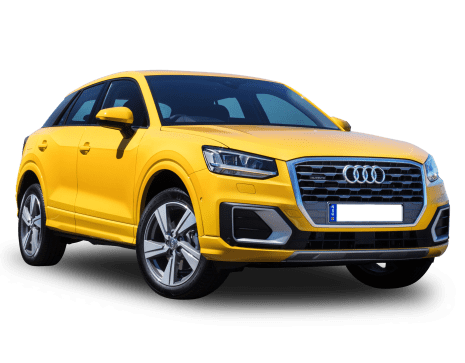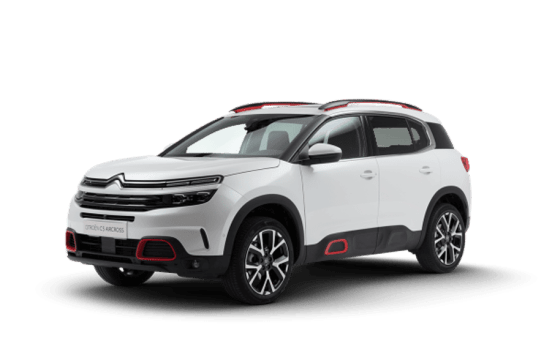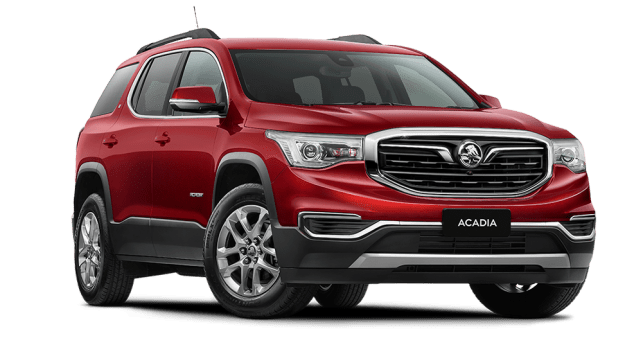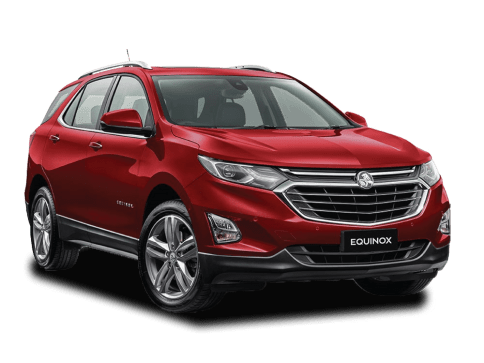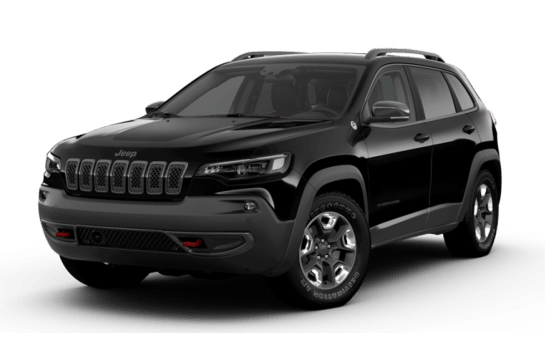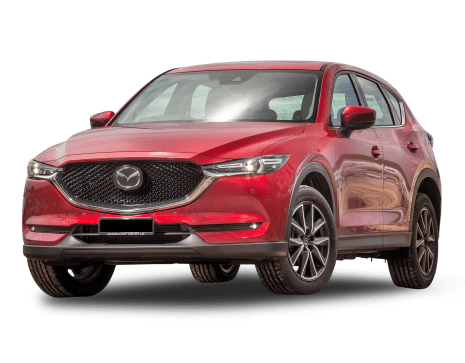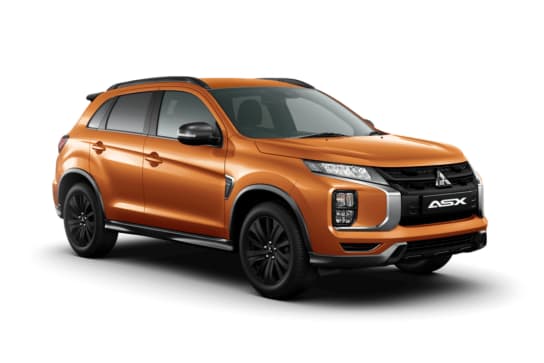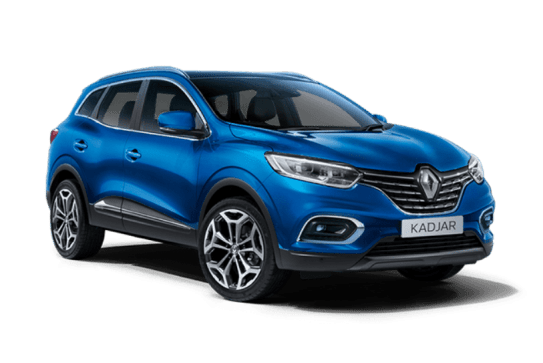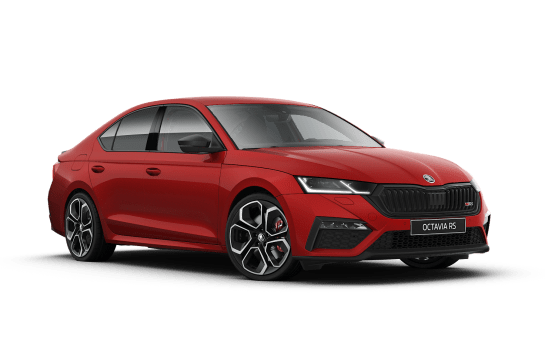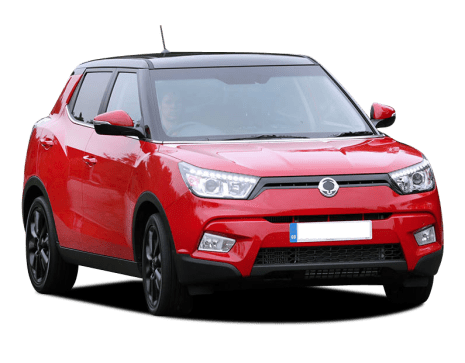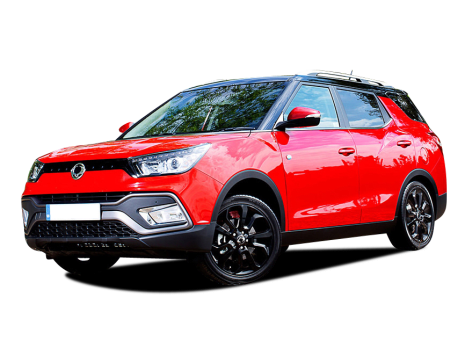
Kia Sportage VS Ssangyong Tivoli XLV
Kia Sportage
Likes
- Great fuel efficiency
- Comfortable and easy to drive
- Interesting design
Dislikes
- Pricey compared to petrol SX
- Capped price servicing costs can be high
- Blank panels for missing features in the cabin
Ssangyong Tivoli XLV
Likes
- Roomy back seat
- Big boot
- Diesel-AWD drivetrain a point of difference
Dislikes
- No petrol will mean few buyers
- Full specs to be confirmed
- Four-star safety (Euro NCAP)
Summary
Kia Sportage
So, I accidentally climbed into the wrong Kia Sportage in the supermarket car park on Thursday. That’s never happened to me before. You know, actually opening the door of a completely random car and getting into it and putting my seat belt on.
But that’s how much the regular petrol version of the Sportage looks like this new hybrid version.
The owners had parked next to me in their Sportage, which was also silver, while I was in the supermarket. There are lots of questions: Why hadn’t they locked their doors? Why didn’t I notice their Sportage had big roof racks and a giant dent in the side of it? And, why am I telling you this?
Read more about
- 2024 Kia EV5 to undercut Tesla Model Y, Toyota bZ4X and Subaru Solterra on price when the mid-size electric SUV arrives in June
- Farewell, Cerato! 2025 Kia K4 sedan officially revealed but when is the Toyota Corolla, Hyundai i30 and Mazda 3 rival coming to Australia?
- First look at Kia's SUV that will "enhance the accessibility" of electric cars revealed as 2025 Kia EV3 takes aim at BYD Atto 3, Hyundai Kona electric and MG ZS EV
As intriguing as those questions are, we’re not here to answer them right now because this investigation is centred on Kia’s first hybrid version of its Sportage.
Yep, finally after what seems like way too long Kia has a rival to Toyota’s RAV4 hybrid mid-sized SUV.
The Sportage Hybrid on test is the SX grade which sits lower in the range but still costs quite a lot, we think.
So, the questions we’re answering today are ones like, is the Sportage SX Hybrid worth the expensive price compared to its petrol twin?
I’ve even worked out how far you’d have to drive and how long you’d probably have to own the hybrid before you break even on the extra money you’ve spent.
And there are other questions, like how fuel efficient is it? And even others like how safe is it and how practical is it? Oh, and what it’s like to drive? That’s important, too.
| Safety rating | |
|---|---|
| Engine Type | 1.6L |
| Fuel Type | — |
| Fuel Efficiency | 4.9L/100km |
| Seating | 5 seats |
Ssangyong Tivoli XLV
The SsangYong Tivoli XLV is about as unknown to Australian customers as cheeseburgers are to the tribespeople of the Amazon.
That is to say, if I asked your opinion of the SsangYong Tivoli XLV, you’d probably have no idea what I was on about. You may be unsure of its origins, unclear of its intentions, and generally baffled by the concept of it. The Amazonians may well feel the same way about burgers.
However, if Korean SUV specialist SsangYong has its way, the Tivoli XLV will become as hip and desirable, as Instagrammable and indulgent as the most clickable cheeseburgers out there. Geez, I’m hungry.
The Tivoli XLV is essentially a longer, taller version of the shorter, lower Tivoli, which is also coming to Australia. It keeps the Tivoli part of the name because it’s largely very similar, but the XLV has some points of difference: it’s all-wheel drive only, it’s diesel only, and it’s clearly one of the most practical small SUVs in the class.
What does XLV stand for? According to SsangYong, the acronym represents “eXciting smart Lifestyle Vehicle”.
Scratch that. Think of it as the 'eXtra Large Version' of the brand’s smallest vehicle, and you’ll be most of the way to understanding just what this big small SUV is all about.
| Safety rating | |
|---|---|
| Engine Type | 1.6L turbo |
| Fuel Type | Diesel |
| Fuel Efficiency | 6.3L/100km |
| Seating | 5 seats |
Verdict
Kia Sportage8/10
Okay, this is pretty easy. That SX Hybrid is excellent - it’s fuel efficient, it drives really nicely, it’s practical, but it’s not great value when you consider it’s more than $8000 pricier than the SX petrol. If you want good value, get the GT-Line hybrid. It comes with more features for not that much more money compared to the petrol version.
Oh, and if you’re reading this in three years time and thinking about buying a second-hand Sportage SX Hybrid, then do it.
Ssangyong Tivoli XLV6.5/10
Depending on the pricing and specifications, the SsangYong Tivoli XLV might well offer an interesting alternative to the mainstream small SUV crowd. The safety score is a bit of a deterrent, but that may not rule it out for all buyers.
It’s almost like this is a provisional review, because we simply don’t know much about the brand’s strategy ahead of the local range rollout in November.
One thing’s for sure: just like a cheeseburger or any good laboured pun, we can’t wait to get our hands on some of the finer details from SsangYong Australia.
Would you consider a car with a four-star Euro NCAP crash score? Tell us what you think in the comments section below.
Design
Kia Sportage
The Sportage Hybrid SX is almost identical in looks to the petrol Sportage, which is why I mistook somebody else's car for mine. There’s a small badge on the tailgate of the hybrid which says HEV for Hybrid Electric Vehicle, but that’s really the only giveaway.
The Sportage is a more interesting looking SUV compared to less avant-garde rivals like the RAV4. I love the arrow LED running lights, the wide, mesh grille, and the tail-lights.
The cabin is also differently good looking and premium, apart from the blank panels on the centre console - the ones that remind you didn’t get the Sportage with heated seats…
Still, even with the blank panels it’s a premium-looking cabin with the 12.3-inch screen and black materials. It would have been nice if the synthetic leather seats were standard on this SX Hybrid instead of the cloth.
Ssangyong Tivoli XLV6/10
One look and you might think 'honey I shrunk the Stavic', and that’s not too bad of a summary. There are some ungainly touches to the design of the Tivoli XLV - as you might expect from a small SUV that has been stretched.
But from some angles, it doesn’t look too bad. The front end is quite fetching, I think, with those projector halogen headlights with LED daytime running lights cutting a different shape to many of its rival models sold in our market. However, the overtly lipped quarter panels aren’t to all tastes, and the curved, clear-lensed tail-lights aren’t going to win any beauty contests.
I don’t think it’s ugly in the same way the original Stavic was… but SsangYong let us in on a secret at the launch event in Korea: there’s an updated, facelifted version of the Tivoli XLV and the regular Tivoli due in June 2019. It may be worth waiting for, because not only will it bring a new, more modern look, it will probably add equipment and safety features.
What do you think? Does it look more or less attractive than, say, a Honda HR-V, Mitsubishi ASX or Nissan Qashqai? Tell us in the comments section below.
Now, size: the XLV is essentially a stretched, more family-friendly version of the Tivoli. Both are built on the same line, and everything is pretty much the same from the C-pillar forward. It measures 4440mm long (which is 198mm longer than the standard Tivoli, both on a 2600mm wheelbase), 1798mm wide and 1635mm tall (Tivoli is 1590mm). The XLV is longer than any other small SUV it competes against.
Australian customers are expected to be able to choose between an array of eight body colours and a contrasting roof finish. One really smart combination is the red body and black roof, and high-spec models are expected to get flashy 18-inch wheels (with 16s on low spec models).
The benefits of the Tivoli XLV’s stretched body are clearest in the boot area, which beats some mid-sized SUVs.
Practicality
Kia Sportage
The Sportage is a mid-sized SUV - it’s not as big as a Kia Sorento, but it is larger than a Kia Seltos.
There’s plenty of room up front with storage in the centre console, cupholders and door pockets.
The second row has directional air vents and great legroom and headroom even for me at 189cm tall. My nine-year old son reckons the window sill is too high to see out of.
He’s out of his booster seat now but he’s a tall kid and doesn’t have this visibility issue very often as we move from test car to test car.
The boot is also big at 586 litres (VDA) behind the second row. It’ll fit the three-piece CarsGuide luggage set with room to spare.
Ssangyong Tivoli XLV8/10
If you’re buying the Tivoli XLV, it’s arguably because it’s a compact SUV with the interior space of a bigger SUV inside. With a claimed cargo capacity of 720 litres (VDA), that makes sense. The XLV adds 297L more space (VDA) over the Tivoli, with a bigger boot than some very big SUVs.
In person the boot looks pretty big, but not as enormous as the numbers suggest. The fact there’s a false floor set-up is handy, though, and the packaged from SsangYong to be able to engineer so much boot space and still offer a four-wheel-drive system and multilink rear suspension is almost genius. Many brands can’t do it as well as SsangYong has. And going by SsangYong’s promise to fit a full-size spare wheel to all of its AWD models, the packaging is even more impressive.
It was handy for us to drive the XLV alongside the Musso and Rexton, both of which are newer-generation models that feel more modern inside. That isn’t to say the XLV feels old - it’s just not as special as its bigger siblings. Again, the face-lifted model due in 2019 could go a ways to fixing that.
If I had to compare the quality and design of the XLV to any car, it would be the old Hyundai ix35. You remember that small-to-mid-size SUV that came before the Tucson, which was on sale here from 2010 to 2015? Well, its cabin design and materials were fine, but nothing special. A bit like the Mitsubishi ASX, which launched around the same time as the ix35, yet is still sold today (and in big numbers!).
The front seats are pretty comfortable and the driver’s seat has good adjustment to it, but taller front seat passengers may lament the lack of height adjustment to the seat - especially in models fitted with a sunroof.
In the back there’s easily enough for a 182-centimetre-tall adult to sit behind their own driving position, with more knee room than most small SUVs, and reasonable shoulder and head room, too. The XLV is a five-seater, and three across the back is possible, but not enjoyable. There are dual ISOFIX child-seat anchors for outboard seats, and top-tethers across the width.
Price and features
Kia Sportage
Let’s get straight to the price because this could be a deal breaker if you’re on a budget and the only reason you’re thinking of buying the hybrid is to save lots of money on your petrol bills.
The Sportage SX Hybrid lists for $45,950. That’s $8400 more than the list price of the same car with a petrol engine.
When I say “same car”, I mean the same SX grade, in front-wheel drive, like the hybrid. The petrol engine in the hybrid is better in every way than the engine in the petrol SX, and that’s probably part of the reason why you’re paying so much more.
Toyota’s pricing on the RAV4 appears more reasonable with hybrid versions costing about $2000 more than the petrol versions of the grade they’re based on.
Do you get more features than the petrol SX? Nope. Same equipment, but there's plenty of it.
Coming standard on the SX Hybrid are 18-inch alloys wheels, LED headlights, and LED running lights. The silver roof rails are standard, too.
Inside the SX Hybrid the seats are cloth and the 12.3-inch media display is standard. So is sat nav, Apple CarPlay and Android Auto, and there’s dual-zone climate control.
That’s not bad if this car was $35K like the petrol version but the hybrid SX is more than $45K and you’re not getting proximity unlocking or push-button start, nor power-adjustable driver’s seat nor power tailgate.
Really, you could buy the SX+ petrol variant for $42 grand and get all of those things, plus a Harman Kardon sound system and synthetic leather seats.
Sure, petrol is expensive these days and a hybrid uses far less, so you’ll make the money back, right? Well, if that’s the reason you’re buying the Sportage Hybrid SX brand new, then don’t. I’ve worked out how far you’d have to drive the hybrid to save $8400 in fuel below.
The only hybrid grade offered is the GT-Line, which is the top of the range and the most expensive Sportage at $55,420. But that’s only $5500 more than the petrol GT-Line and therefore better value in comparison to the SX Hybrid and its petrol twin.
Ssangyong Tivoli XLV6/10
We don’t know what price SsangYong is aiming to list the XLV model range at, because the company hasn’t yet confirmed pricing and specifications. So we can’t tell you what it will cost.
But we do know there will be manual and automatic variants available in four-wheel drive only (4WD/AWD) at launch, and it will be diesel only. The smaller Tivoli will be offered with petrol and diesel, and a more affordable front-wheel drive model.
There’s an expectation that the XLV will come well specified as standard, but that two trim levels will be offered.
The base model will likely have cloth seat trim, dual-zone climate control and a leather-lined steering wheel, while the top-spec will come with leather seat trim. All models will likely come with a touchscreen media system with Apple CarPlay and Android Auto, plus USB and auxiliary inputs and Bluetooth phone and audio streaming.
Seat heating, auto headlights, auto wipers, a sunroof, 18-inch wheels (as opposed to 16s on the base spec), push-button start and keyless entry could be offered standard in the high grade version - but we’ll have to wait and see.
Expect more safety equipment in the top version, too, but a reversing camera and parking sensors should be offered range-wide.
As a potential budget-conscious offering pitched against relative high-spec small SUVs, the Tivoli XLV prove intriguing. Think of a Honda HR-V VTi-L, which lists at $33,390, and has a 1.8-litre petrol engine and is front-wheel drive… a similarly specified diesel AWD automatic model could be tempting.
Under the bonnet
Kia Sportage
Normally we cover the design and practicality before we get under the bonnet but you’re on a fact-finding mission and I’m your guide, your guide to cars. That would be a good website name.
Okay, the Sportage SX Hybrid has a 1.6-litre turbo-petrol sporty and fuel-efficient engine making 132kW and 265Nm. There’s also an electric motor producing 44kW and 264Nm. Their combined output is 169kW/350Nm.
The hybrid variants are front-wheel drive only and have a six-speed automatic transmission.
It’s a great engine, smooth transmission and the way the motor interacts is almost seamless.
This isn’t a plug-in hybrid, either. The batteries recharge automatically through regenerative braking. Really, for Australia, this type of hybrid is the way to go, offering superb range and no anxiety about charging.
Ssangyong Tivoli XLV7/10
The XLV will come with only one engine option - a 1.6-litre turbocharged four-cylinder diesel engine. Hardly a horsepower hero, it produces 115kW of power (from 3400-4000rpm) and 300Nm of torque (1500-2500rpm).
It is available with a six-speed manual or six-speed automatic, with a standard-fit 4WD system known as 'Torque On Demand 4x4', which can sense the surface under the tyres and apportion torque to the rear axle to ensure better traction. SsangYong says it may offer a front-wheel drive XLV if demand necessitates.
A diesel engine isn’t unique, but it is rare in the small SUV class. But the fact of the matter is about 90 per cent of small SUVs sold are petrol-auto, so diesel could miss the mark for a lot of buyers.
The XLV offers a bonus element - towing capacity: the XLV can cope with a 500-kilogram unbraked trailer, and a 1500kg braked trailer - pretty strong for a compact SUV. Consider it competing against the Mazda CX-3 diesel AWD (640kg un-braked, 800kg braked) and Mitsubishi ASX (750kg/1400kg).
Efficiency
Kia Sportage
Kia says that after a combination of open and urban roads the Sportage SX Hybrid will use 4.9L/100km. The petrol SX with the 2.0-litre engine and front-wheel drive uses 8.1L/100km.
In our own fuel test we recorded 6.9L/100km which was mostly urban with a couple of motorway trips during the week.
Getting back to our earlier question regarding the money you’ll save in fuel. I’ve worked it out using actual maths.
So, using Kia’s official fuel economy of 4.9L/00km, that’s 3.2L/100km less than the 2.0-litre petrol SX and if fuel is $2 per litre you’re saving $6.40 for every 100km you drive in comparison.
Now, $6.40 goes into $8400 (the extra you’ve paid for the hybrid) 1312.5 times. Multiply that by 100 to get the number of kilometres you’ll need to travel. So, that’s 131,250km you’ll need to go to save the $8400 in fuel.
Most Aussies do 10,000 kays a years on average. That means you’re looking at over 13 years. Tell you what, the person who buys it second hand will get the best deal because they really will save money on fuel.
It’s true the Sportage Hybrid is fuel efficient and I’ve scored it very well for that, but if it was me I’d be looking to buy one second hand so I wasn’t getting hit hard with the new car hybrid price premium.
Ssangyong Tivoli XLV6/10
The fuel consumption claim for the Tivoli XLV 4x4 auto is 6.3 litres per 100 kilometres. That’s not bad, and some small SUVs are better…
The Mazda CX-3 diesel AWD auto, which has a very low claimed consumption of 5.1L/100km (admittedly, it has a 1.5-litre engine with just 77kW/270Nm). But even the 2.2-litre turbo-diesel Mitsubishi ASX AWD auto uses less, at 6.0L/100km, and it’s almost a decade old. That engine has 110kW/360Nm.
The Tivoli XLV is a fair bit bigger than those two models, but even so, the fuel use should be a bit lower. It just goes to show the engine is working hard to deal with the weight of the Tivoli XLV, which in its heaviest guise, weighs 1535kg. Beefy.
Driving
Kia Sportage
The Sportage SX Hybrid is better to drive than the petrol SX with the 2.0-litre naturally aspirated engine. It starts silently thanks to the electric motor and will coast away serenely until you need to move faster and come to a hill where you need the power of the engine.
The brake pedal feel is better than I’ve experienced in many hybrid cars and the transition from engine to motor is almost seamless.
The ride is comfortable, there’s no jiggle over potholes and handling isn’t bad for this type of family SUV.
The only negative point to report is that because the hybrid Sportage is front-wheel drive, there can be a loss of traction if you accelerate hard from a standstill on a wet road or while climbing a steep hill.
If you’ve never driven a hybrid before, you’ll be absolutely fine - the only thing you'll need to get used to is turning the key and not detecting any engine noise.
Ssangyong Tivoli XLV6/10
It’s difficult to learn what a car is all about over 29km, but that was the task I was handed in Korea, where I drove the Tivoli XLV from the hotel in Gangnam, Seoul, to a rest stop some 24km north of town. Then I jumped in some other models, before eventually getting a further - very illustrative - 5km stint behind the wheel at an off-road coarse later in the day.
There was some traffic, slow moving highway driving, and even a bit of higher-speed cruising. And it was fine.
The diesel engine was impressively refined and quiet, so much so that I initially thought it was a petrol. But after a couple of instances of traffic halts, it became clear there was a little more rattle from under the bonnet, and a more heft over the nose than you’d expect of a petrol.
That said, the performance was muted. With a torque output of 300Nm, you might think it would be potent - but it’s really not, and there’s some hesitancy from standstill, not to mention some sluggishness during roll-on acceleration.
The six-speed auto transmission did a good job, as far as I could tell, but a more arduous test loop will sort the facts from the feels.
As for the dynamic element, it’s hard to say anything other than the XLV felt smaller, more nimble and more fun to drive than either the Rexton or Musso models I also drive. The steering was adequate in its response, if a little lifeless, and the ride was a touch harder than I was expecting, but not sharp or punishing.
If you’re interested in off road specs, the Tivoli XLV is said to offer a 20 degree approach angle, a 20.8deg departure angle, and 17.0deg ramp-over. More of a problem, though, was the lack of ground clearance. The figure is just 168mm, which isn’t much more than some regular run-of-the-mill hatchbacks. Consider this: a Subaru XV has 220mm. Yep.
The suspension travel isn’t huge, either, with stiff-legged feel to the model we drove. Part of that could have come down to the stylish 18-inch alloy wheels and low-profile tyres, but it simply isn’t a soft and wobbly off-road SUV. It’s a monocoque chassis small crossover, so if you want a more serious SsangYong off-roader, the ladder-frame Rexton could offer a lot more appeal.
Safety
Kia Sportage
In terms of safety the Sportage was awarded the maximum five-star ANCAP rating in 2022. The SX Hybrid has pretty much the same safety tech as the GT-Line. So there’s AEB, lane keeping assistance and a rear cross-traffic alert. There are also front and rear parking sensors
For child seats there are two ISOFIX points and three top tether anchor mounts across the second row.
Disappointingly Kia has swapped the full-sized spare alloy wheel you’d get in the petrol and diesel variants for a space saver spare in the hybrid.
Ssangyong Tivoli XLV6/10
The Tivoli XLV doesn’t have an ANCAP crash test rating, but it was tested by Euro NCAP in 2016, where it scored a less-than-excellent four- out of five-star score. That’s in spite of the fact it was available with auto emergency braking (AEB), too.
According to SsangYong, the “top of the range Tivoli will feature AEB, lane departure warning, lane keep assist and high-beam assist”. We’ve heard that will be mirrored in Tivoli XLV flagship spec, too.
The Tivoli XLV has seven airbags (dual front, driver’s knee, front side and full-length curtain), as well as a reversing camera and rear parking sensors. ISOFIX child seat anchors are standard.


